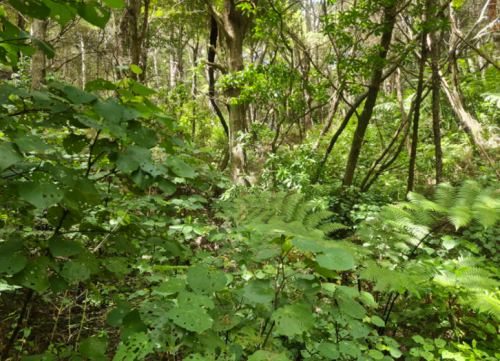
Current filter:

Hawke’s Bay Regional Council is committed to protecting and enhancing critically endangered indigenous forest with 375 hectares of land earmarked for protection this year.
Team Leader Biosecurity Biodiversity Mark Mitchell says $1.3 million will be dedicated to deer fencing and pest control of seven native forest sites across the region, thanks to Regional Council, QEII and Jobs for Nature funding.
The seven sites are Birch Hill, Motumokai Bush, Puahanui Bush, Gilles Bush, Pakuratahi Bush, Lochinvar remnant, and Whittle Bush. Many of these are home to Hawke’s Bay most acutely threatened forest species including Tōtara, black beech and Northern rātā.
“We’ve got seven sites of nearly 375 hectares that will be protected, four of which are challenging, large sites and it wouldn’t have been possible to fence them without the additional funding from Jobs for Nature or collaboration with the Regional Council’s Erosion Control Scheme and Open Spaces,” says Mark.
Fencing these sites is to keep feral deer out as numbers have increased across the region. They have a big impact on the understorey (the forest layer above the ground and below tall trees) as as their eating patterns change the composition of the forest. This affects other species in the forest such as birds who rely on the understorey for food and habitat. Combining the fencing with pest control will help our native birdlife.
“We’ve faced challenges with costs of material like deer netting and posts, difficulties in getting contractors and material, and the nature of the sites requiring specialist equipment. Despite these challenges, five out of the seven projects are underway and on track to be completed by this year, with the other two set to begin in March.”
Environment and Integrated Catchments Committee Chair and Regional Councillor Hinewai Ormsby says indigenous biodiversity in New Zealand is in crisis, and this work is key to support and look after it.
“Too much of our biodiversity is just hanging on. Hawke’s Bay has lost 77% of the original indigenous forest that once covered the region. This Ecosystems Prioritisation programme will help secure what remnants of biodiversity we have left,” says Councillor Ormsby.
“It is a step forward in addressing biodiversity decline, focusing on sustaining, protecting, and improving a full representation of native species and habitats.”
“A big thank you to the biodiversity and biosecurity team for their hard mahi on the ground in protecting our taonga species.”
On top of the prioritisation work, there’s another $100,000 from Ministry for the Environment going to dune protection in the Porongahau area, and the Regional Council have been delivering a $1,044,000 Te Uru Rakau funded 1 Billion Trees native planting programme, in partnership with QEII and Landcare Trusts, which will see 174 hectares planted between 2021 and 2022.
The seven sites being protected are around the region and unique for a range of reasons:
Image: from Motumokai Bush, showing the positive impact of fencing 7 years after it was first put in.
17 March 2022
Disclaimers and Copyright
While every endeavour has been taken by the Hawke's Bay Regional Council to ensure that the information on this website is
accurate and up to date, Hawke's Bay Regional Council shall not be liable for any loss suffered through the use, directly or indirectly, of information on this website. Information contained has been assembled in good faith.
Some of the information available in this site is from the New Zealand Public domain and supplied by relevant
government agencies. Hawke's Bay Regional Council cannot accept any liability for its accuracy or content.
Portions of the information and material on this site, including data, pages, documents, online
graphics and images are protected by copyright, unless specifically notified to the contrary. Externally sourced
information or material is copyright to the respective provider.
© Hawke's Bay Regional Council - www.hbrc.govt.nz / +64 6 835 9200 / info@hbrc.govt.nz